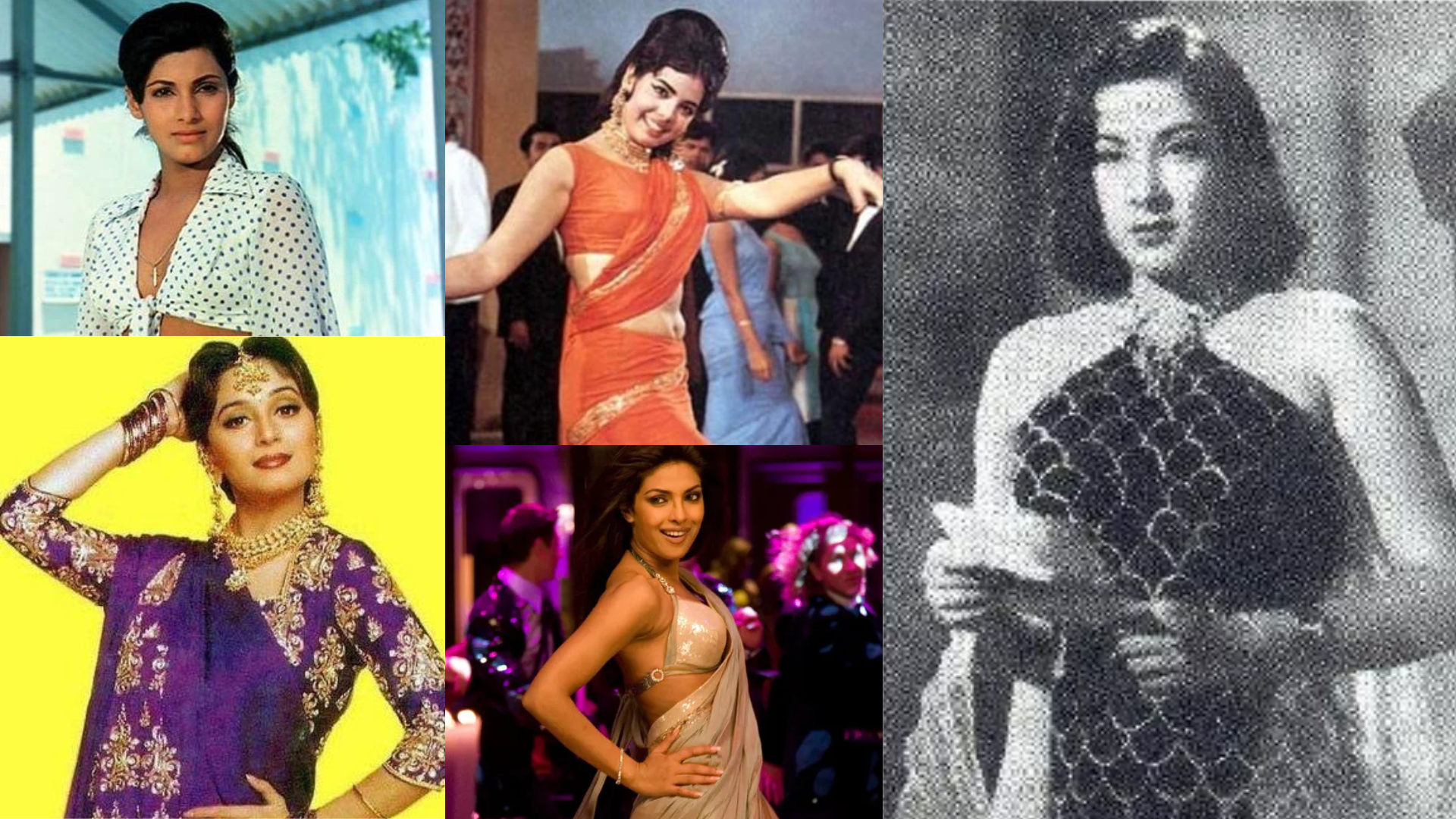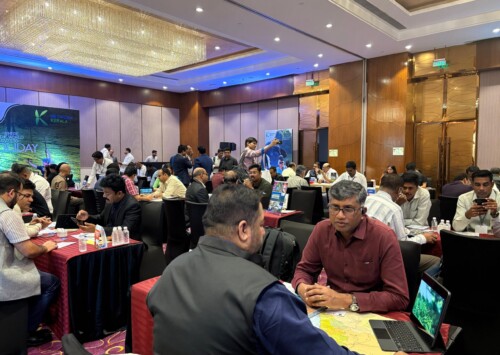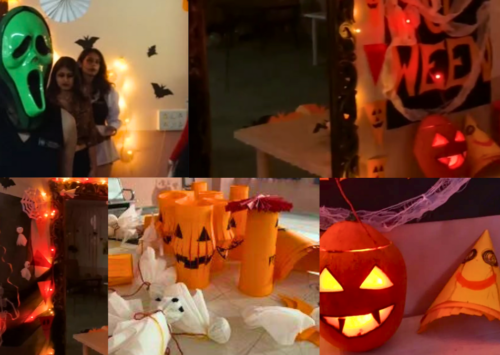Iconic Bollywood costumes that became style legends
From Nargis to Priyanka Chopra, these iconic outfits redefined fashion in Hindi cinema

These styles are not just remembered, they are recreated time and again at Bollywood-themed parties, where fans step into the shoes or clothes of their favourite stars
For over a century, Bollywood has been more than a film industry, it has been India’s most influential fashion ramp. Alongside music and storytelling, it has shaped how generations dressed, dreamt and saw themselves. Fashion in Hindi cinema is never incidental, it is expressive, deliberate, and often iconic. Some outfits go beyond screen moments, they become symbols of their time.

These styles are not just remembered, they are recreated time and again at Bollywood-themed parties, where fans step into the shoes or clothes of their favourite stars
From Sridevi’s iconic blue chiffon saree in “I Love You” song sequence in Mr India to Kareena Kapoor’s shimmering pink outfit in the “It’s Raining Men” montage of Kabhi Khushi Kabhie Gham, Bollywood’s fashion moments have continued to inspire generations. These styles are not just remembered, they are recreated time and again at Bollywood-themed parties, where fans step into the shoes or clothes of their favourite stars.
But these legendary outfits are not limited to just these two actresses. For over nine decades, Hindi cinema has been known for its unforgettable dialogues, powerful performances, and timeless songs. Yet, one aspect often overlooked is its fashion, an essential part of storytelling that has shaped identity, reflected changing trends and defined what style meant to each era.
From the golden age to the Y2K craze, here are five iconic Bollywood outfits that did not just make a statement, they became history.
Nargis, Mermaid Gown, 1958
Way back in 1958, Nargis broke style conventions in Ek Tha Raja Ek Thi Rani with a breathtaking mermaid-style gown, a creation by the iconic costume designer Bhanu Athaiya. Crafted from white nylon and intricately pleated to resemble delicate fins, the halter gown featured ruffled details that gave her the illusion of a goldfish gliding through a dreamscape. Worn during a surreal dream sequence in the film, the look was unlike anything Hindi cinema had seen before.
“In this outfit for a dream sequence, she looked almost like a mermaid and was thrilled with my creation,” Athaiya later said in an interview.
The gown not only showcased Athaiya’s visionary design sensibilities but also captured a softer, more whimsical side of Nargis rarely seen on screen.
Beyond the film, Nargis, one of the most elegant stars of the 1950s was a loyal patron of Athaiya’s work. Known as the “lady in white” for her signature monochrome style, she often wore her exquisitely designed georgette saris with silk embroidery, Swiss net with lace appliqué floral motifs, and delicate shadow embroidery on chiffon. Together, their collaborations left behind a legacy of quiet glamour and sartorial storytelling.
Mumtaz Orange Saree, Brahmachari, 1968
As the 1960s progressed, Bollywood fashion witnessed a dramatic shift. No look captured this transformation better than Mumtaz’s iconic orange saree in the 1968 film Brahmachari. Featured in the energetic song ‘Aaj Kal Tere Mere Pyaar Ke Charche’, the saree broke tradition with its pre-pleated, low-waist drape, gold gota borders, and frilled hemline. Designed by Athaiya, it reflected a bold departure from the conventional six-yard drape, embodying the fusion of Indian aesthetics with western silhouettes that defined the decade.
The look not only symbolised the vibrant spirit of the 60s but also laid the foundation for what would evolve into the saree-gown, a modern reinterpretation of the classic drape. Films like Padosan soon followed, where Saira Banu’s wardrobe, full of vivid colours and striking prints, further fuelled the trend. The saree, reimagined through Bollywood’s lens, became a statement of both tradition and modernity, one that continues to influence runway collections and everyday wardrobes even today.
Dimple Kapadia’s Polka Dots, Bobby, 1973
By the 1970s, Western fashion had fully entered Bollywood and few looks captured this shift like Dimple Kapadia’s polka-dotted shirt and black skirt in Bobby, an iconic hit film. Worn during the hit song ‘Hum Tum Ek Kamre Mein Band Ho’, the knotted white shirt with bold black polka dots became a national sensation.
The outfit was so iconic it earned its own nickname, the “Bobby print.” Its influence spread widely, with both men and women embracing the style. Kapadia’s modern wardrobe and confident screen presence made this look one of the most remembered aspects of the film, often recalled even more than her performance.
Madhuri Dixit’s Purple Saree, Hum Aapke Hai Koun, 1994
Then came the 90s, a time when liberalisation was quietly seeping into the country. It was the era of high-waist jeans, corset dresses, baggy pants, and denim shirts. Yet, amid this wave of Western influence, there was also a visible return to traditional values, especially through cinema. Films like Maine Pyaar Kiya and Hum Aapke Hain Koun captured this contrast.
Take Madhuri Dixit’s purple saree in Sooraj Barjatya’s 1994 hit, it was not just costume design, it was cultural messaging. Fully Indian in its drape and spirit, the saree stood out against the rising tide of Western silhouettes, quietly signalling a return to rooted, homegrown ideals in a rapidly modernising India.
Featured in the iconic song Didi Tera Devar Deewana, alongside Salman Khan, the saree was embellished with intricate zari work and golden thread. Designed by Anna Singh, it was among the most expensive costumes in the film. But more than its cost, it was its impact that left a lasting mark, women across the country wanted to own a purple saree just like Dixit’s. It became a fashion phenomenon, inspiring countless replicas and cementing its place in Bollywood style history.
Even years later, its charm remains undiminished. In a nostalgic tribute, Dixit recreated the look on the sets of Dance Deewane 4, draping herself once again in the iconic purple saree, proving that some moments in fashion are not just remembered, they are relived.
Priyanka Chopra’s Silver Saree, Dostana, 2008
Ending the list with the transformative 2000s, a decade that truly shaped the way India dresses today. globalisation was in full swing, and fashion was becoming bolder, sleeker, and more experimental. Nowhere was this shift more striking than in Priyanka Chopra’s unforgettable silver sequined saree from the 2008 film Dostana.
Featured in the chartbuster Desi Girl, the saree, designed by noted fashion designer Manish Malhotra, was anything but traditional. Styled to reflect Priyanka’s character, a fashion editor living in Miami, the look redefined the saree for a new generation. With its metallic silver sheen, sequined skirt, and flowing chiffon pallu, the outfit ditched embroidery and embellishment in favour of minimalism, movement, and modernity. Crafted from satin, chiffon and georgette, it shimmered under the Miami sun and onscreen alike.
Interestingly, the look was originally meant to be a gown, but it was director Karan Johar who greenlit the switch to a saree, giving it a bold, contemporary twist that fit both the character and the setting. The gamble paid off. The silver saree quickly became iconic, inspiring designers and everyday wearers alike to experiment with metallics, sleek drapes, and bolder silhouettes.
More than just a costume, it became a symbol of the modern Indian woman, global in outlook, rooted in identity, and unafraid to shine. A fashion moment that did not just reflect a trend, but started one.
In Bollywood, fashion has never been just about clothes, it is storytelling stitched in silk, chiffon, and sequins. These iconic outfits marked turning points not just in style, but in how Indian cinema saw its women, its eras, and itself. Decades later, their impact still shimmers, proof that true style never fades, it only evolves.









